Stuffing your face in the wilderness after an arduous day of hiking is one of life’s greatest pleasures. During our year in New Zealand, we went on four Great Walks and a variety of other overnight camping trips, and let me tell you, the grub was legendary.
Tramping is how New Zealanders refer to overnight hiking/backpacking, and it’s one of the best way to deeply explore New Zealand nature. Having enough of the right kinds of foods, however, can make or break your experience. For days, you’re reliant on what you bring on your back: there’s no shops in the wilderness to pop into for extra snacks!
New Zealand backcountry cooking doesn’t have to be difficult. In fact, easy and straightforward is best. Future you will thank you for getting it right. Read on for what makes good backpacking food in New Zealand, as well as some of our favorite tramping recipes that we used routinely while exploring the New Zealand outback.
What Makes Good Tramping Food?
There are six criteria that a food must meet to guarantee success on the trail. There are some major constraints on the types of foods you should bring, since you will be carrying them on your back and cooking them in the wilderness. They should be able to sustain you for days of heightened physical exertion, and they should fill you up and fulfill you.
The best tramping foods are:
- Light Weight. You are literally hauling everything you need to survive on your back. Everything, including food, needs to be as light as possible.
- Durable/Nonperishable. Your food has to last in your backpack for multiple days. You can’t afford for foods to go bad on you.
- Fast Cooking Time. Efficiency is essential in the backcountry. You’re going to be tired and hungry, and the ability to quickly get your meals together is important for fortitude, vitality, and morale.
- Calorie Dense. You’ll need 4500+ calories per day while backpacking in mountainous terrain (source). That’s a lot more than most people are used to eating, so you should pay careful attention to make sure that the foods you bring have enough calories.
- Nutritious. Although you won’t get any nutrient deficiencies while tramping for even a week or two, you do want to make sure that you’re getting your basics in. Make sure that your food throughout the day contains all three macronutrients: carbs, fat, and protein. Basic micronutrients are easy to get from a variety of foods, snack, and drinks. Basically don’t just bring ramen is what I’m saying.
- Satisfying. Tramping food should be delicious. It doesn’t have to be gourmet delicacies, but if you’re not satisfied after a meal, your experience is going to be miserable.
Tramping Breakfast Ideas
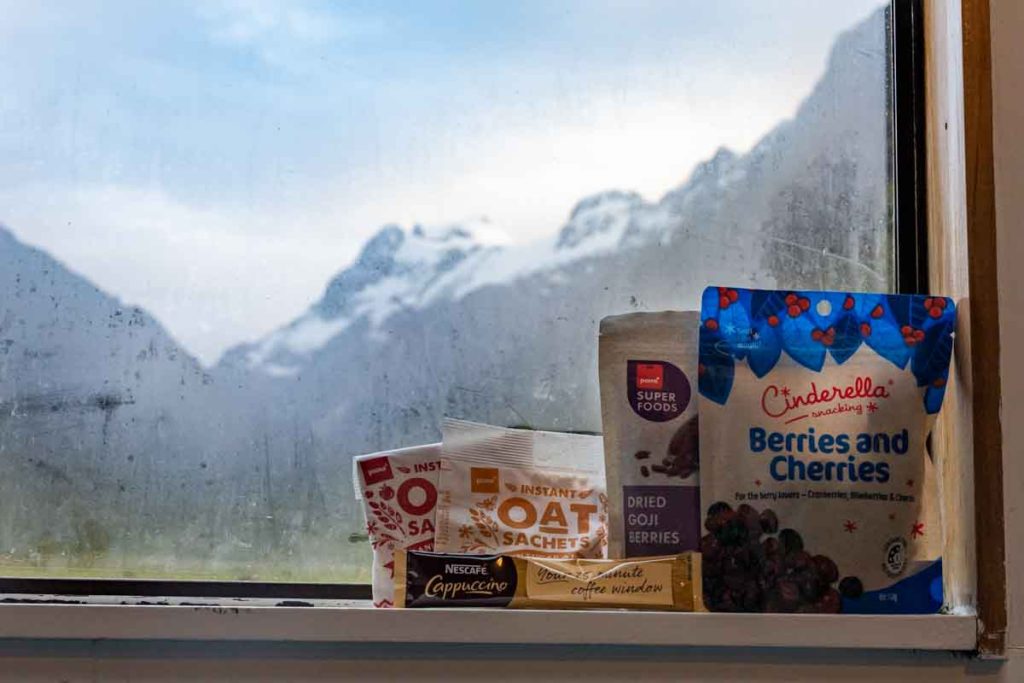
For breakfast I’m all about that instant oatmeal life. There’s just nothing else that’ll fill you up with warm nutrients and fiber in such a short time. Instant oatmeal is light weight, durable, fast, nutritious, and also cheap. The perfect tramping food!
Feel free to beef up your oatmeal with nuts, seeds, dried fruit and berries, extra sugar, whatever floats your boat. I recommend bringing 2 packets per person per breakfast. A good tip is to pour the hot water straight into the oatmeal packet. This saves time on dishes and cleanup.
I prefer a somewhat laid-back morning with a cooked breakfast while tramping. If you prefer to be on the road as soon as possible, granola bars (muesli bars in New Zealand) are a great alternative to instant oatmeal. They’re quick, yummy, and many are nutrient dense.
Tramping Lunch Ideas
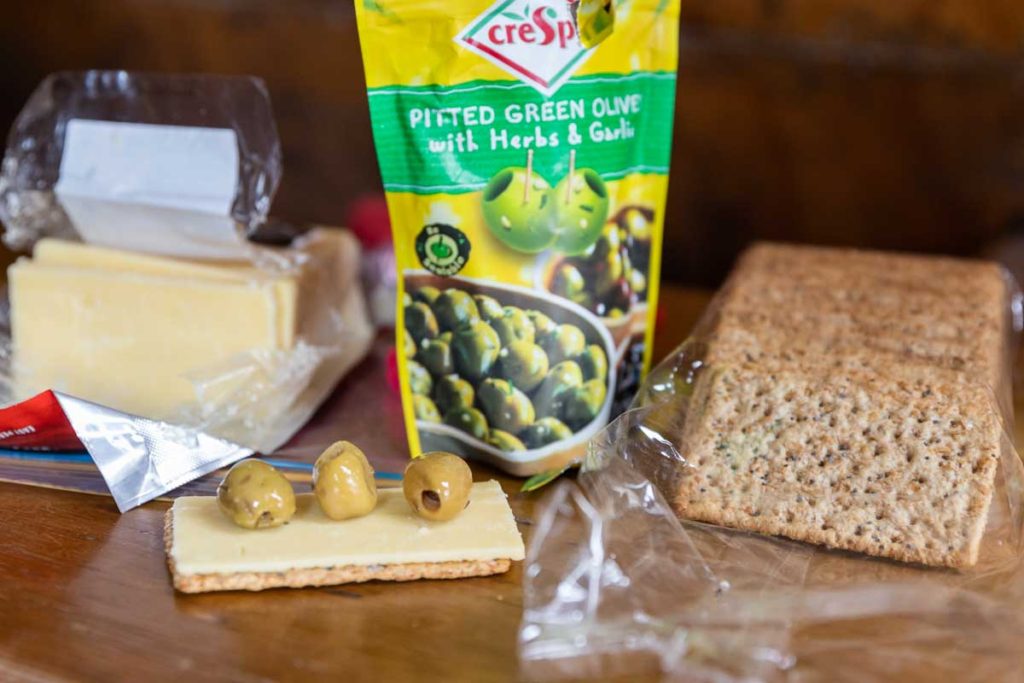
We’ve tried several iterations of tramping lunches before we settled on our favorite and never looked back. A lunch of crackers, cheese, and olives is the most satisfying, gratifying, and fulfilling wilderness lunch. The saltiness of the cheese and the olives is exactly what one craves in the backcountry. This feels like a gourmet spread, and I know I said you don’t need gourmet, but this is the exception.
There’s plenty of carbs in the crackers, heaps of protein and fat in the cheese, and a variety of micronutrients in the olives. Nutritionally, this tramping meal is a powerhouse.
It’s important to get a hard cheese. Soft cheeses will spoil fast, while a hard cheese will easily last for a four day trip (we’ve tested this many times). Just touch the cheeses in the grocery store and get the hardest one you can find. Something like a sharp cheddar.
For crackers, we’ve pretty much converted to Arnott’s Vita-Weat crackers (the rectangular kind). They are so durable! They’ve never broken or crumbled on us, and we’ve shoved them into our backpacks on many a Great Walk. The cracked black pepper flavor is especially delicious!
Finally, the olives! When we found Crespo Pitted Green Olives, we knew we stumbled on a tramping food gold mine! They come in a variety of flavors, and are packaged in pouches that are great to throw in your backpack. Also, a salty garlicky/herby/spicy flavor bomb is lust-worthy on a tramping trip! (The black olives were mediocre, you have been warned).
Tramping Snack Ideas
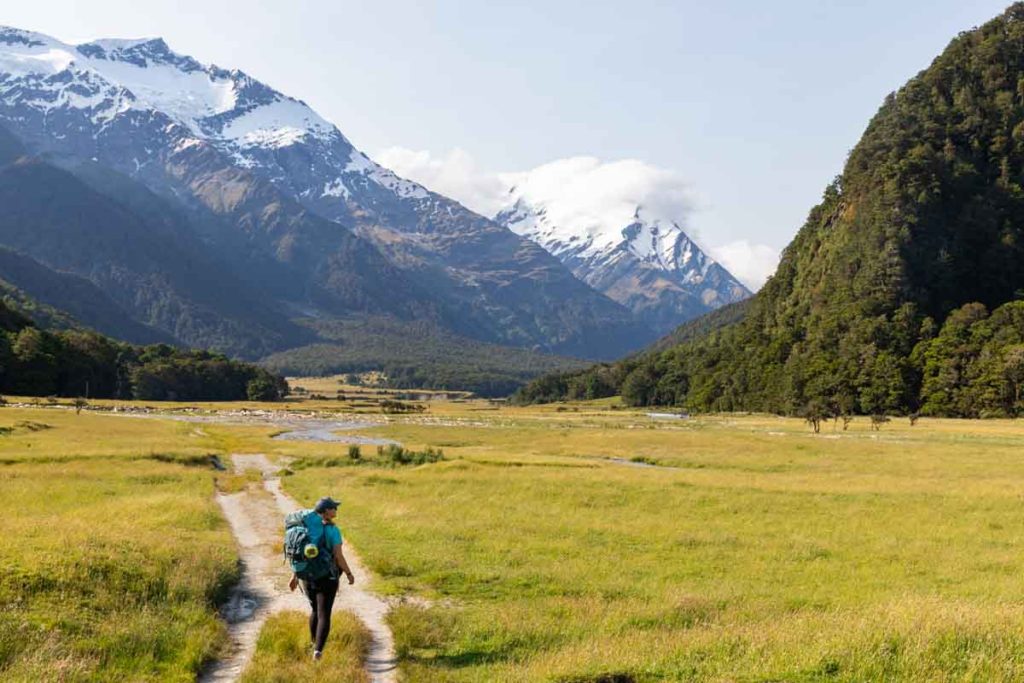
For perfect snacking game, you need to follow the Ideal Snacking Formula. What, you’ve never heard of it? Huh. Probably because I made it up.
The idea is that for the perfect combination of snacks, the optimal fusion of flavors and textures, you need something salty, something sweet, and something fresh. If one of the three is missing, that is exactly what you’ll crave.
SALTY: For salty, look for flavored nut mixes, pretzels, and salty snack mixes. The best place to find a variety of satisfying salty snacks is in the bulk section of Countdown or Pak’nSave. There’s variations on salty snacks galore, including BBQ flavored crackers, spicy mustard pretzels, smokey nut mixes, wasabi peas, and more! Go wild with the snacks.
SWEET: Many sweet snacks can also be found in the bulk section. There’s honey flavored nuts, jelly-type candies, and hard candies of all types. Hard candies are perfect for popping in your mouth while hiking: they can provide the extra boost to get over a steep mountain pass. We also make sure to always have a granola bar per person per day. My favorite sweet snack, however, is peanut M&Ms. They melt perfectly in your mouth, and the peanut adds a little extra nutrition.
FRESH: Fresh snacks that work well with tramping are hard to come by. We make do with various dried fruits and berries, which you can find either in the bulk food section, or in the breakfast section. Additionally, these are full of the micronutrients that you miss from a lack of fresh fruits and vegetables.
Tramping Dinner Ideas
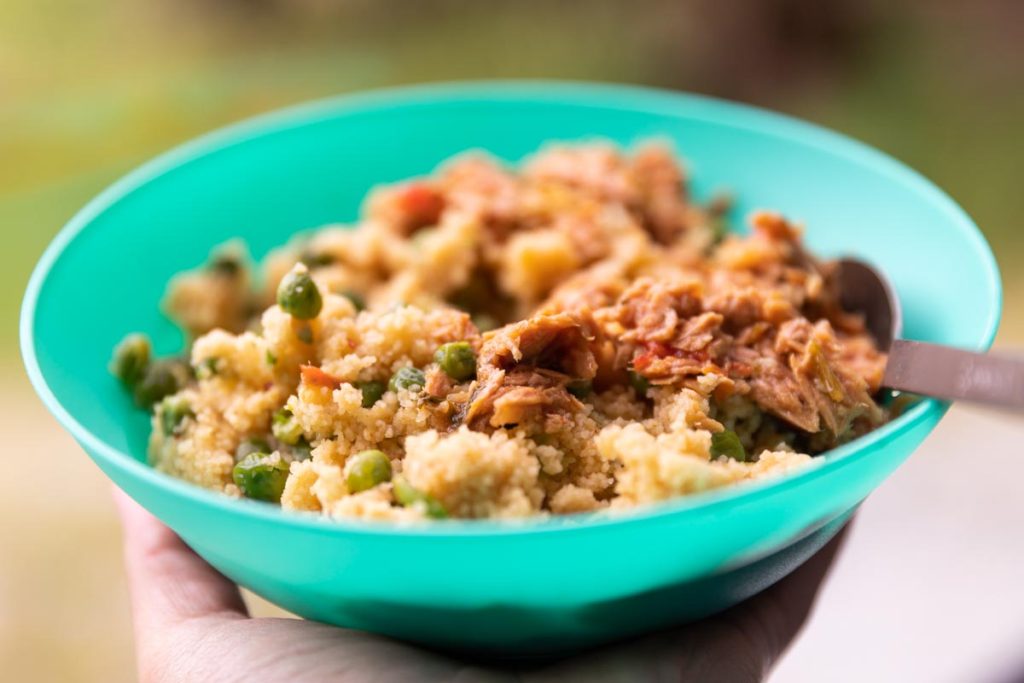
Dinner on a backpacking trip is sacred. It’s the ultimate reward for getting to your destination and setting up camp. A good dinner is also crucial for restoring your energy levels for the next day of hiking.
The absolute best tramping food for dinner is couscous. It was practically designed for the backcountry. We’ve tried all sorts of tramping recipes, and keep coming back to couscous again and again. Couscous is perfect because of how fast it cooks: just bring water to a boil, turn off the heat, stir in the couscous, cover and wait for five minutes! That’s it!
Couscous is our favorite backcountry meal, and we eat it with a variety of flavors to keep it interesting and surprising. The formula is:
Couscous + Instant soup mix + Dried peas + Tuna/salmon packet = Savory Goodness
This is seriously so good and satisfying, other hikers are coveting it all the time.
For couscous, make sure to get the small grains, not the Israeli couscous with larger grains. That kinds takes longer to cook.
Experiment with instant soup mixes, but beware of mixes with soups that are supposed to be thicker: those have a thickener in them and need more water. A good soup to start with is French Onion. Alternatively, a bouillon cube fills the same function: saltiness and savoriness.
Continental Surprise Garden Peas can be found in most New Zealand grocery stores. They’re dried peas that are ready after 3 minutes of boiling. Peas are a great way of adding vegetables to your tramping diet. Boil the peas first, before turning off the heat and stirring in the couscous.
Sealord Tuna Pockets are super convenient to bring backpacking. The flavors are incredible (try the lemon, sesame & ginger), and the single use packets are light and perfect for tramping. There are options with salmon as well. Usually, however, if we’re going for salmon, we splurge for some smoked salmon. Smoked salmon adds so much richness and luxury to the meal. It’s so so so worth the splurge, and it’s still cheaper than buying a freeze-dried meal.
Complete Freeze Dried Meals
Freeze dried meals from brands like Back Country Cuisine are a super popular option for tramping in New Zealand, and many people on Great Walks choose these as dinners. We usually opted for one of these dinners on the hardest day of the hike.
These are great because of how easy they are: literally just add hot water and wait. They’re fast to prepare, complete nutritionally, and there’s a lot of variety of meals.
However, they’re expensive at about $14 per packet (we always got a 2 serving packet for each person). Also, the various flavors are hit or miss. For us, there were more misses than hits: many of the meals are honestly not that good, although of course that’s a matter of taste.
I’d recommend trying these for novelty sake, but not relying on them for every meal.
Tramping Beverages

Beverages are a critical piece of the tramping food repertoire. Don’t discount this section! If it’s cold and rainy, a hot cup of cocoa is life affirming. Hot coffee or tea in the morning bolsters your fortitude, and a cup of wine with new friends in a backcountry hut makes for marvelous memories.
Below are my favorite tramping beverages:
TEA: Tea is so easy to bring with you tramping. it’s light, packable, and cheap. Enjoying a cuppa on a cool evening feels like a luxury, even though it’s a beverage basic.
COFFEE: I drink coffee both in the morning, and on arrival to camp as a reward for a hard day. My favorite coffee to bring tramping are the Nescafe Gold Cappuccino Sachets. These feel like such a fancy treat because they foam when you add hot water. I bring enough of these for mornings, afternoons, and a couple for fellow trampers who inevitable also want some.
HOT COCOA: A camping classic. Savoring the view from camp with a warm beverage is one of life’s greatest pleasures, and hot cocoa is one of the best options.
HOT CIDER: A similar function to hot cocoa, but with a brightness that hits the spot so hard.
BOX WINE: This is the only beverage I recommend that doesn’t come in powder form. (I wish!) Wine is heavy, so consider carefully if you’re willing to haul a bag of liquid up a mountain. If the answer is yes, wine is an amazing treat in the backcountry. Be sure to take the plastic sack out of the cardboard box.
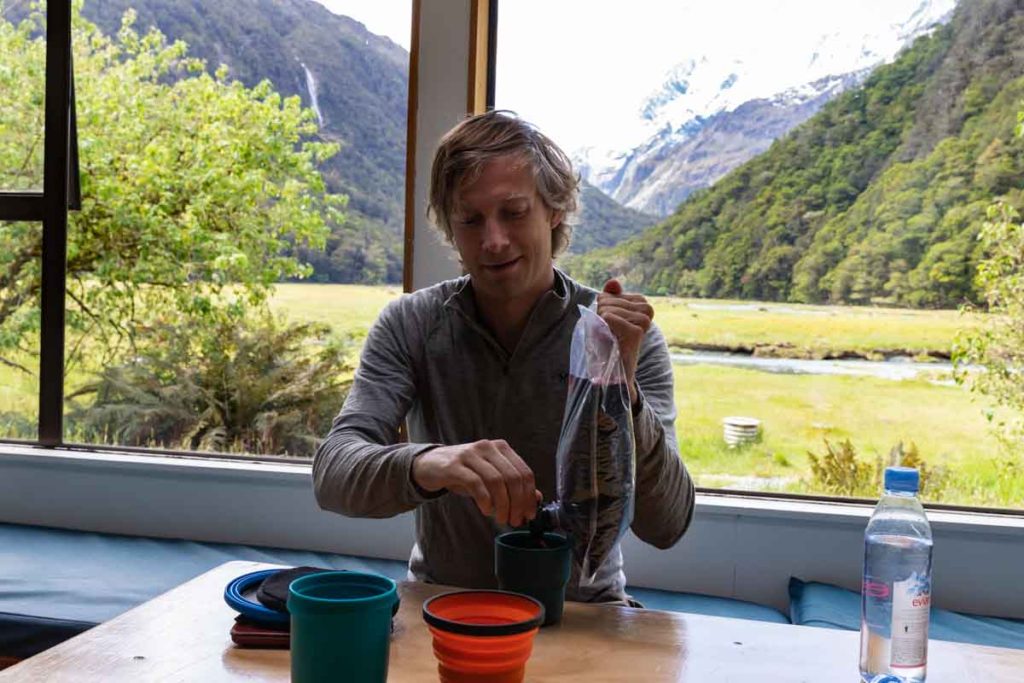
Final Thoughts
Some final points include:
- Bring an extra meal for emergencies. You should always have extra food when heading out into the wilderness.
- Bring a large ziplock bag for trash. Even if you stay in backcountry huts, you have to carry out all of your trash.
- Be sure to bring enough food. You need enough fuel to get you out of the wilderness safely.
Tramping in New Zealand is an absolutely incredible experience. Like all adventures, making sure you’re adequately prepared can set you up for success. Cooking in the backcountry is very different from campervan cooking, so take care of future you by packing enough of the right types of food for tramping in New Zealand.
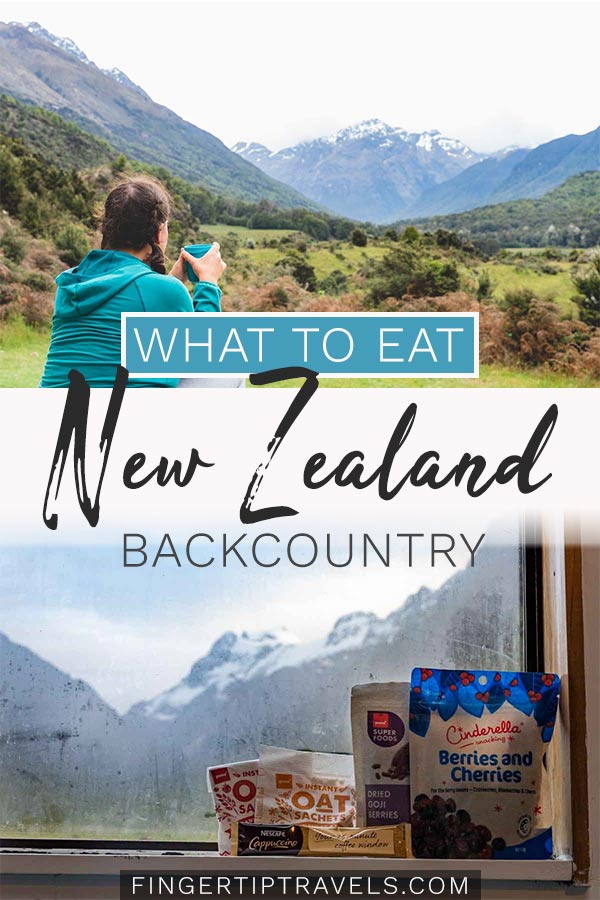




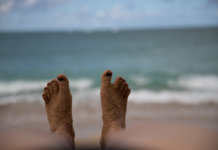

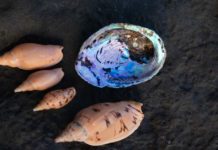
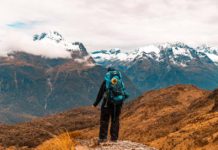
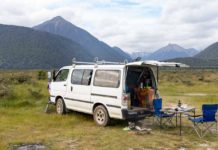
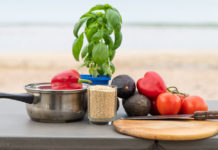

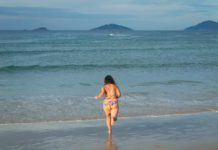
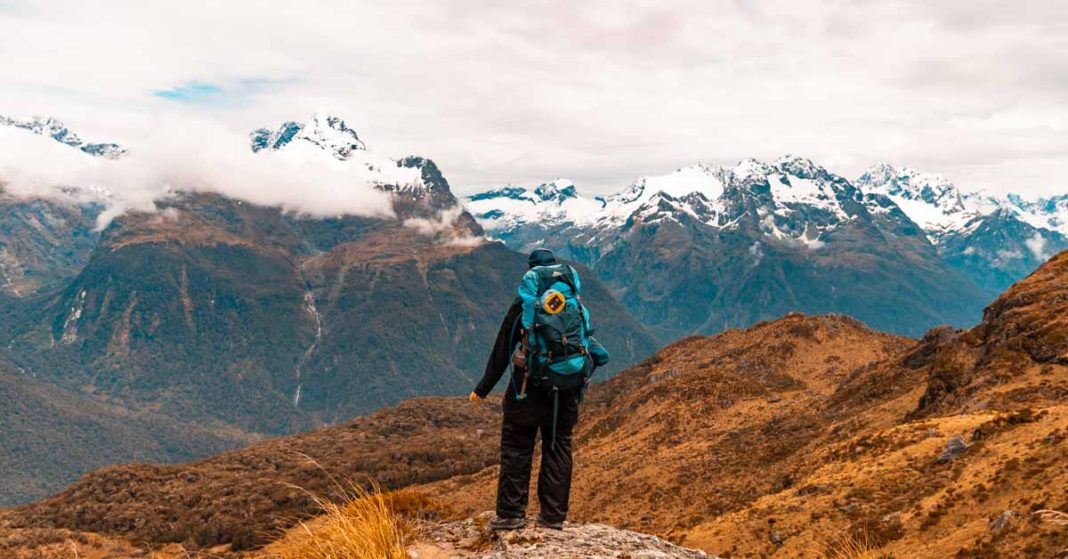

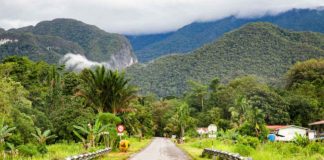
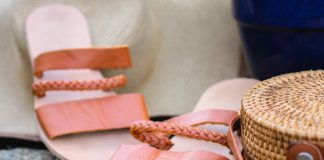

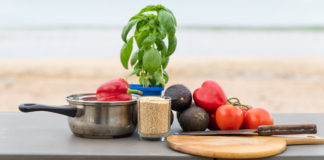
Really enjoyed your well thought article on something that is a bit of a current hobby-horse (read:obsession) of mine. As a native New Zealander I have spend many years in our outback and have lugged many a load out of food stuffs into the hills. Some have been surprisingly good (single serve steam puddings – OMG! soooo good after a hard days hiking!), crackers, cheeses of most varieties, olives (so with you on the puches of these, ditto the tuna foil packs – kafir lime tuna with cocnut milk yumm!). I admit to being somewhat lazy in my fifties and am leaning a little more on instant dehydrated back country packs but I am also an avid foody so I love your suggestions and especially the thought you have put into how you present these in your piece. I wish you every njoyment and safe travel in your future hiking/tramping journeys and thanks again for sharing =)
Thank you so much for your comment, and the suggestion of the single serve steam puddings – I HAVE to try it now! Wishing you well on your tramping adventures as well!
Very helpful article, thank you! I didn’t grow up in NZ and my partner never went tramping as a young un so we’re both learning as we go and want to move away from relying on the ol’ dehydrated dinners.
When planning evening meals, what size serving of couscous would be ideal? More than a usual serving I’m guessing? (I think 1/2 cup is the usual serving size)
I actually think we brought about 1/2 cup per person, and just made sure to have some dessert and hot cocoa after! I remember feeling pretty full afterwards! You could do a little more to be safe, but with cooked foods it sucks to have leftovers, because you have to carry it out afterwards!
Super helpful, thanks for taking the time to share your tips. Currently packing for the Routeburn Track and was stoked to come across your site, has made making my shopping list easy
This was such a helpful article and has helped me plan for my upcoming tramp. For the cheese, crackers and olives lunch meal, how many crackers would you recommend for a meal?
If I remember correctly, we used half a pack for two people per lunch!
Footnote: I went with your couscous/French onion soup and added some chopped vege and vac packed smoked salmon fillets for dinner first night – was a total hit with my partner!! And also added the olives to our usual cheese/cracker/pepperoni lunches – also a hit. Thanks again for your tips – made meal planning easy and eating them a delight
Yay! I’m so happy it worked for you!!